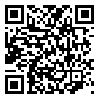BibTeX | RIS | EndNote | Medlars | ProCite | Reference Manager | RefWorks
Send citation to:
URL: http://tumj.tums.ac.ir/article-1-421-en.html
Background: Dopaminergic is the most important
neurotransmitter is fear. The dopaminergic mesolimbic pathway has essential
role in excitable behavior, and it's role in Parkinson disease. The aim of this
research in study, the effect of dopaminergic pathway in fear response.
Methods: The elevated plus maze was used in
combination with the percentage of time spent in the open arms of the maze (OAT%) and the percentage of entries into the
open arms (OAE%) to measure fear. Increases in the OAT% and OAE% indicate an anxiolytic effect
(reduction in anxiety), whereas decreases in the OAE% and OAT% indicate an anxiogenic effect. After
five days, the rats were injected with saline and different doses of sulpiride
and Bromocriptine.
Results: Results showed that intracerebroventricular
administration of sulpiride, in the doses of 5, 20μg/rat and bromocriptine, D2 agonist in doses 65, 95μg/rat produced
a significant effect comparing to sham groups (p<0.05). While intracerebroventricular
administration of sulpiride 15, 10μg/rat,
and bromocriptine 70,
80μg/rat,
did not show any significant effect comparing with sham group (p<0.05). In the current research
intracerebroventricular administration of sulpiride, D2 antagonist at the doses of 5, 10, 15, 20μg/rat and Bromocriptine, D2 agonist in the doses of 65, 70, 80, 95μg/rat were used and theire effect on
the fear behavior were studied.
Conclusions: The possible effect of Dopaminergic
system in the fear process, especially D2 receptor increase fear.
| Rights and permissions | |
 |
This work is licensed under a Creative Commons Attribution-NonCommercial 4.0 International License. |





